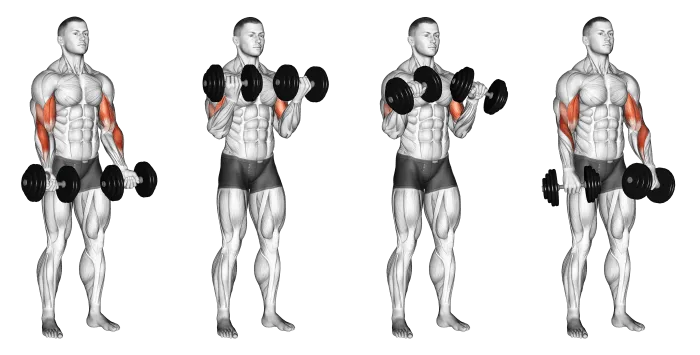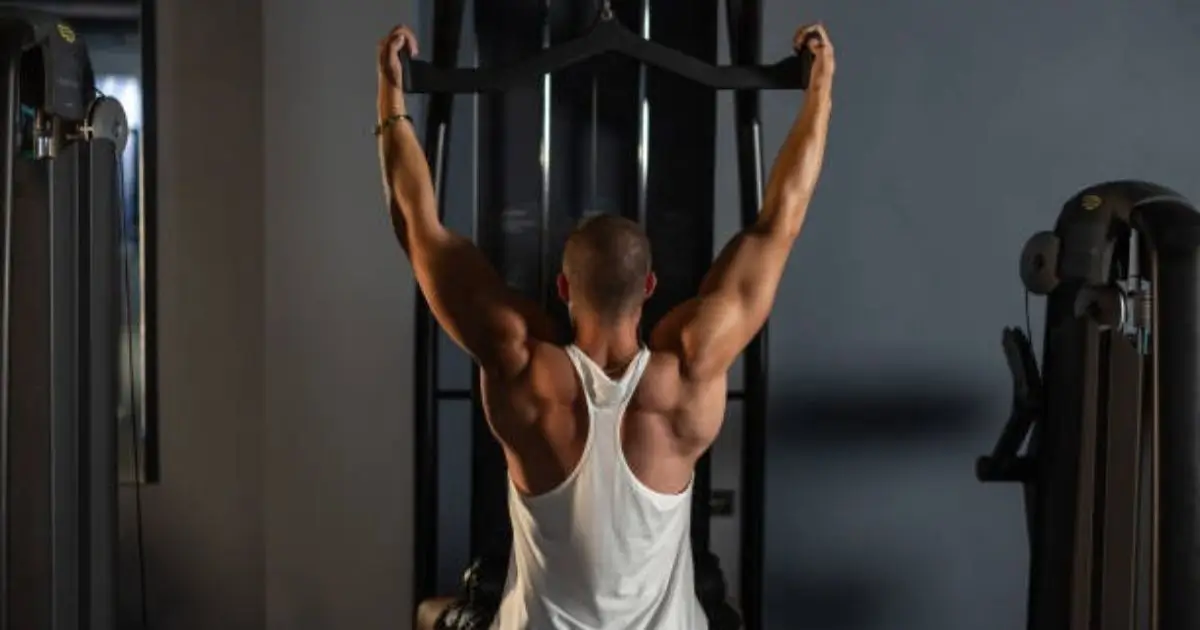Introduction
Seeking to increase your upper body strength and shape a more defined figure? < Exactly what you need could be a focused back and bicep dumbbell program. From the convenience of your house or gym, dumbbells are the best adaptable tool for developing muscle, increasing strength, and raising general fitness.
We will delve deeply into what you need to know about designing the ideal back and bicep dumbbell exercise in this all-around guide. This article will offer you practical advice, professional approaches, and a road map to upper body perfection regardless of your level of experience with fitness or gym-going.
Table of Contents
Benefits of a Back and Bicep Dumbbell Workout
Incorporating a dedicated back and bicep dumbbell workout offers numerous advantages:
- Strengthening back muscles enhances spinal alignment and helps offset the harmful consequences of extended sitting.
- Targeted exercises boost general upper body strength and help to build muscular mass.
- Daily motions, including lifting, tugging, and carrying, depend on these muscular groups for increased functional fitness.
- Portable, taking little room, and allowing for a great variety of exercise variations, dumbbells offer unmatched convenience.
Important Considerations Before You Start
Warm-Up Routine
A proper warm-up is crucial to prevent injuries and prepare your muscles. Try this 5-10 minute routine:
- Arm circles (forward and backwards)
- Light shoulder rolls
- Dynamic stretching
- Bodyweight movements like arm swings and torso rotations
Proper Form: The Key to Effective Workouts
Try to keep correct alignment and concentrate on controlled motions. For higher weights, steer clear of employing compromising technique or momentum.
Choosing the Right Weight
Select dumbbells that challenge you but allow maintain proper form:
- Beginners: Start with lighter weights (5-10 lbs)
- Intermediate: 10-20 lbs
- Advanced: 20-35 lbs or higher
The Best Dumbbell Exercises for Back
1. Dumbbell Rows

- Bent-Over Rows: Targets entire back muscle group
- Single-Arm Rows: Improves unilateral strength
- Chest-Supported Rows: Reduces lower back strain
2. Renegade Rows

- combines back muscle involvement with core stability
- done in a plank posture for more difficulty
3. Dumbbell Pullovers

- Fantastic for focussing on chest and upper back
- Perfect for building general strength of the upper body
4. Dumbbell Shrugs

- Especially targets trapezius muscles.
- Increases neck strength and shoulder stability.
5. Reverse Dumbbell Flyes

- Focuses on the upper back and rear deltoids, enhancing shoulder condition and posture.
The Best Dumbbell Exercises for Biceps
1. Dumbbell Bicep Curls Variations

- Standard Curls: Classic bicep builder
- Hammer Curls: Targets brachialis and forearms
- Concentration Curls: Isolates bicep muscles
- Incline Curls: Provides unique muscle tension
2. Dumbbell Reverse Curls
- Aim for forearm muscles and brachialis.
- Increases holding strength
3. Dumbbell Preacher Curls

- Slows down motion and boosts muscle isolation.
- Helps build the optimal bicep muscle
4. Dumbbell Zottman Curls

- All-around exercise aiming at several arm muscle groups
- combines eccentric and concentrative motions.
Sample Back and Bicep Dumbbell Workout Routines
Beginner Routine (2-3 days per week)
Exercise Sets Reps Rest
Dumbbell Rows 3 10-12 60-90 sec
Hammer Curls 3 10-12 60-90 sec
Reverse Dumbbell Flyes 3 12-15 45-60 sec
Intermediate Routine (3-4 days per week)
Exercise Sets Reps Rest
Renegade Rows 4 12-15 60-90 sec
Incline Dumbbell Curls 4 10-12 60-90 sec
Dumbbell Pullovers 3 12-15 45-60 sec
Advanced Routine (4-5 days per week)
Exercise Sets Reps Rest
Single-Arm Dumbbell Rows 4 12-15 45-60 sec
Zottman Curls 4 10-12 60-90 sec
Dumbbell Shrugs 3 15-20 45-60 sec
Tips for Maximizing Results
Progressive Overload
Gradually increase weight, reps, or sets to continually challenge your muscles.
Nutrition
- Consume adequate protein (1.6-2.2g per kg of body weight)
- Focus on lean proteins, complex carbohydrates, and healthy fats
Rest and Recovery
- Allow 48-72 hours between intense back and bicep workouts
- Prioritize sleep and proper nutrition
Common Mistakes to Avoid
- Using excessive weight at the expense of form
- Rounding the back during rowing movements
- Using momentum instead of muscle contraction
- Neglecting proper warm-up and cool-down
FAQ Section
Q: How often should I work on my back and bicep? Depending on your degree of fitness and recovery capabilities, A should be 2–4 times a week.
Can I develop muscles using simply dumbbells? A: Indeed! For varied resistance training to help muscles develop, dumbbells are great.
Q: How long before I start to feel benefits? Usually 8 to 12 weeks, depending on regular exercising and a diet.
Conclusion
Starting a back and bicep dumbbell workout program is a great approach to increasing your upper body strength, straightening your posture, and raising general health. Recall that consistency is essential. Start with good form, then progressively raise the intensity; pay close attention to your body.
Prepared to change your exercise? Let’s start with those dumbbells!


















